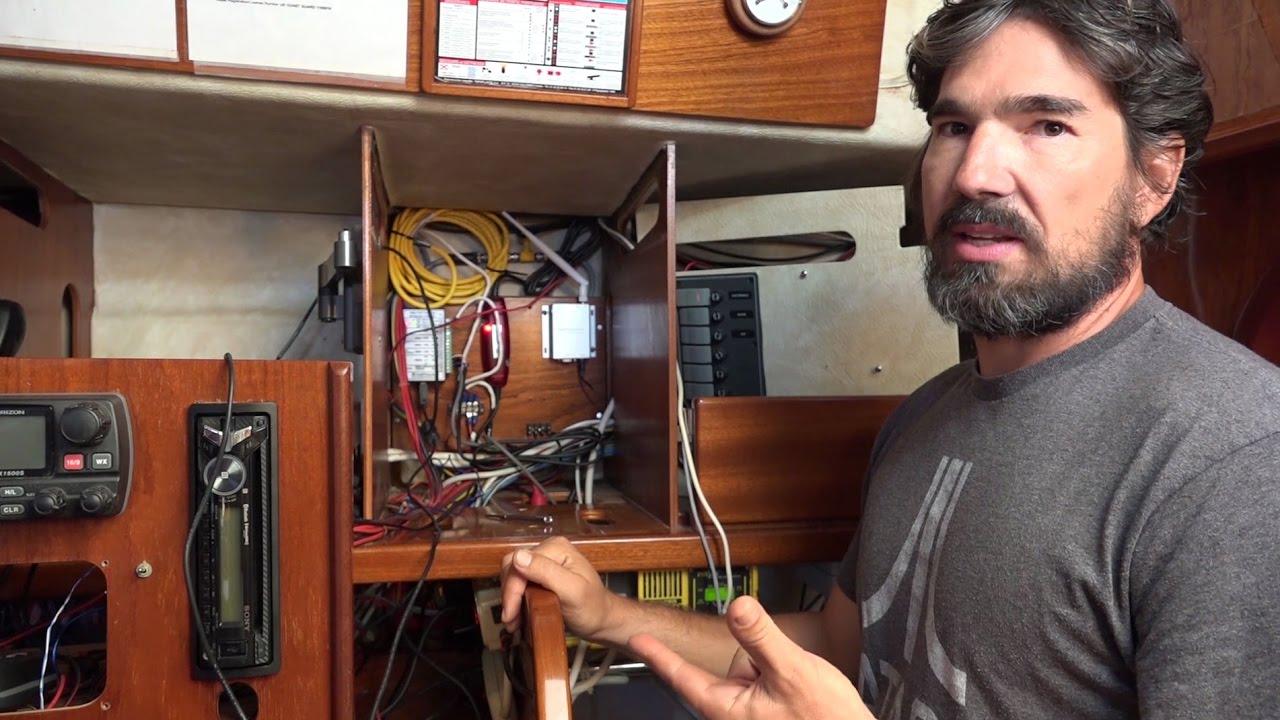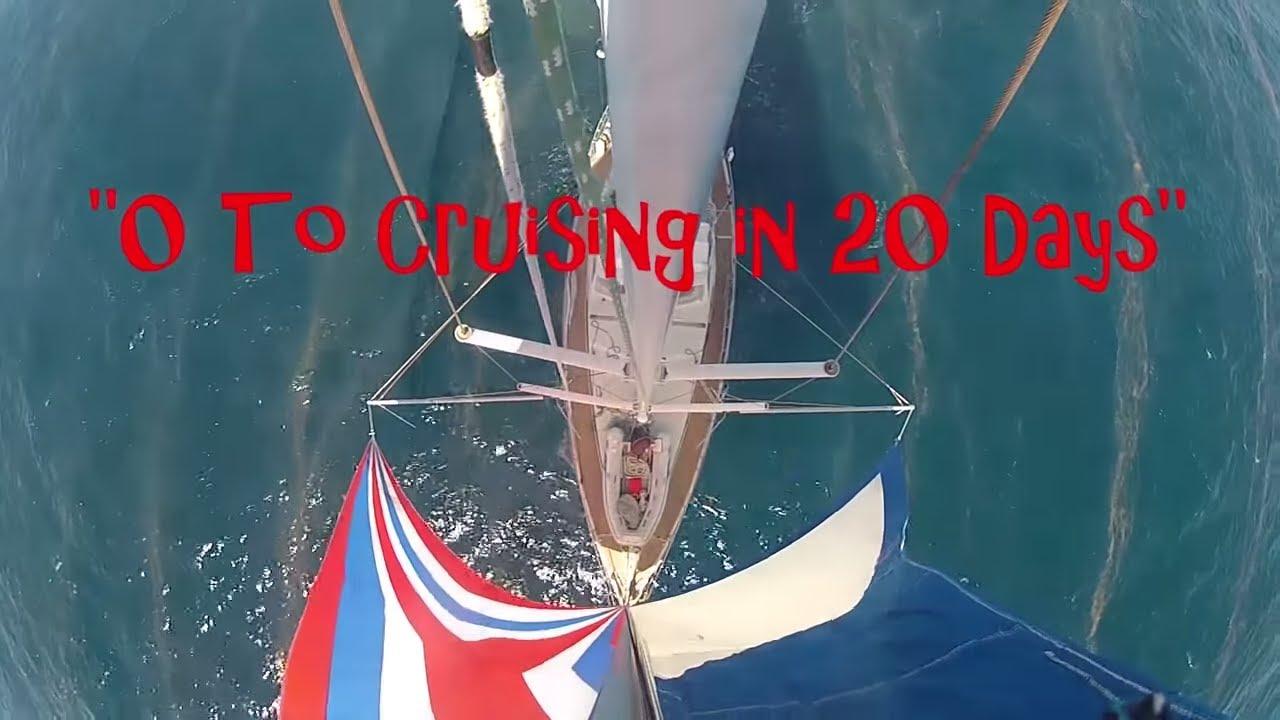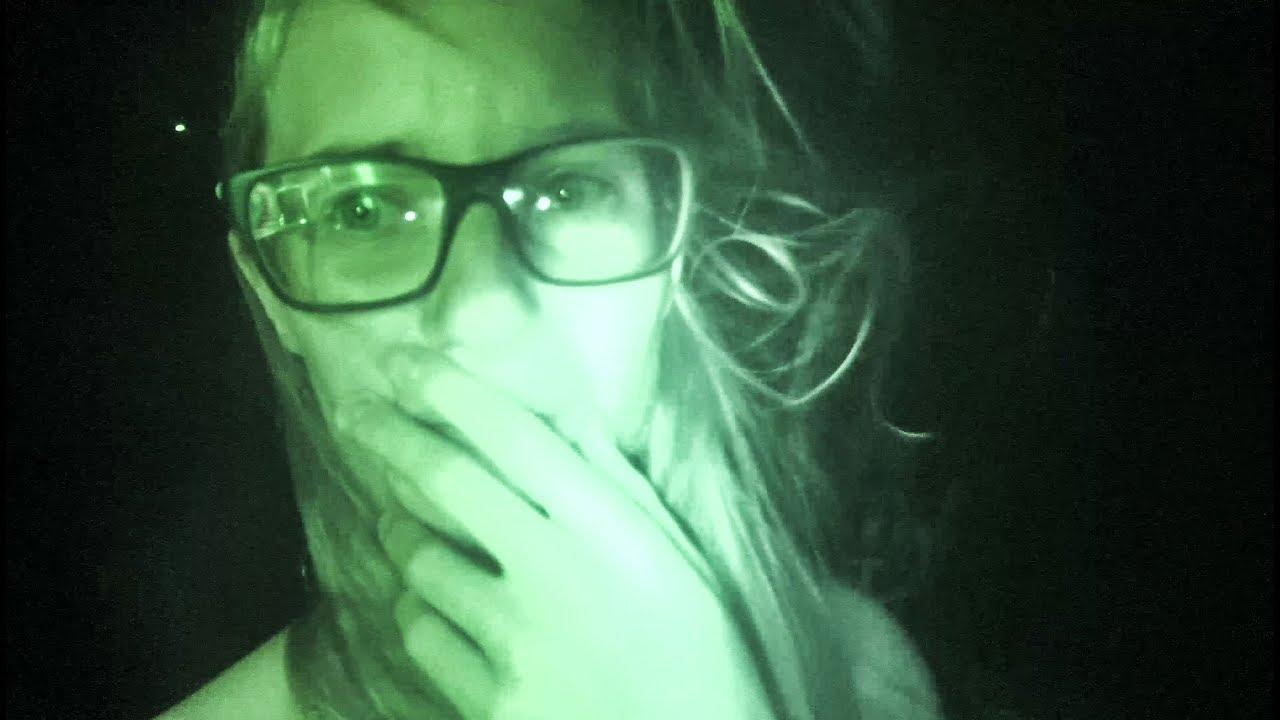Welcome to our blog post! In this article, we will be discussing the fascinating topics covered in the YouTube video titled "Sailing and Navigation Electronics Installation!- Sailing Vessel Delos." In the video, the presenter introduces a new Windows 10 tablet that has been connected to their wireless network, providing them with radar functionality. They also share their excitement about the arrival of their new instrument, Delos, as their old system had been deteriorating over the years. The presenter explains the reasons behind their choice of the Delos system, highlighting its compatibility with the standard nmea 2000 network bus. Additionally, they mention the advanced capabilities of the Delos system, such as the hypersonic wind sensor that provides not only wind speed and direction but also humidity, temperature, and barometric pressure measurements. Join us as we delve into the world of sailing and navigation electronics installation, discovering the latest innovations in technology for seafarers. Stay tuned!
– Introduction to the Sailing Vessel Delos and the need for new navigation electronics
Welcome to the post section about the Sailing Vessel Delos and the need for new navigation electronics. In this section, we will discuss the importance of upgrading the navigation system on the Delos and the exciting new additions we have made.
One of the main reasons for the upgrade is the deteriorating condition of our old Eng system, which has been onboard for 16 years. Recently, we encountered issues such as flaky speeds and erratic depth readings. To make matters worse, a bird flew away with the top of our wind vane during our sail from Cape st. Francis, leaving us without any wind direction or speed data. After considering various options, we came across the Merit Rong’s system, recommended by a friend on FB Totem.
One of the key features that attracted us to the Merit Rong’s system is its use of the standard nmea 2000 network bus. Unlike other systems that require proprietary protocols and expensive adapters, the nmea 2000 network allows us to easily connect any sensor using standard locks. We now have one network backbone cable running throughout the boat, simplifying our setup. Additionally, the new instrument delivers a barrel provides us with impressive stats. For example, the hypersonic wind sensor offers accurate wind speed and direction measurements, along with additional data such as temperature and barometric pressure.
With the installation of our new navigation electronics, we are excited to improve our sailing experience on the Delos. Stay tuned for more updates on our journey and the amazing features of the Merit Rong’s system!
– Overview of the Meritronics system and its benefits
In our latest post, we are excited to share the installation of the Meritronics system on our sailing vessel Delos. This system has brought a whole new level of convenience and efficiency to our sailing and navigation experience.
One of the standout benefits of the Meritronics system is the integration of a Windows 10 tablet, which allows us to connect to our wireless network and access radar and instrument data from the marathon’s system. With this setup, we have a Wi-Fi radar display on a tablet, complete with position charts and other relevant instrument data. The best part is that we can now retire our old laptop at the nav station, making our workspace more streamlined and clutter-free.
Another reason why we chose the Meritronics system is its use of a standard NMEA 2000 network bus. Unlike other systems that require proprietary protocols and adapters, the Meritronics system allows us to easily plug in any sensor we want, using standard locks and connectors. With a single network backbone cable running through the boat, we have a simple and efficient setup, compared to the multiple wires required for individual instruments in our previous system. Additionally, the Meritronics system offers impressive stats, such as the new ultrasonic wind sensor that provides not only wind speed and direction but also humidity, temperature, and barometric pressure readings. This innovative feature eliminates the need for moving parts, ensuring accuracy and reliability.
Overall, the Meritronics system has revolutionized our sailing and navigation experience on Sailing Vessel Delos. Its seamless integration, standardized network bus, and advanced features make it a highly beneficial system for any sailing enthusiast. With this system in place, we can navigate with ease and confidence, ensuring a safer and more enjoyable sailing experience.
– Installation process and advantages of the NMEA 2000 network bus
In our latest sailing and navigation electronics installation, we are excited to share with you the installation process and advantages of the NMEA 2000 network bus. We recently acquired a Windows 10 tablet for just over $200 on Amazon, which we have successfully connected to our wireless network. This tablet now allows us to have radar over the Wi-Fi network, displaying all the instrument data from the marathon’s system, including position and charts. As a result, we can retire our old laptop at the nav station and enjoy the convenience of having all the necessary information on a portable device.
The reason why we decided to invest in this new instrument delivery system is that our old Eng system, which is 16 years old, has been gradually deteriorating over the past couple of years. The speeds have become unreliable, the depth readings sometimes act up, and we even experienced the unfortunate incident of a bird flying away with the top of our wind vane during a sail. After exploring various instrument options like Raymarine and Furuno, we discovered the Meritron system through a recommendation from a friend on FB Totem.
The main advantage of the Meritron system, and why we ultimately chose it, is its use of the standard NMEA 2000 network bus. Unlike other systems that require proprietary protocols and specific instrument compatibility, the NMEA 2000 network bus allows for easy integration of different sensors and instruments without the need for adapters. This means that any sensor we desire can simply plug right into the network bus using standard locks. We only need one network backbone cable that runs throughout the boat, replacing the multiple individual wires that our previous system required. This cable terminates in convenient blocks where we can easily connect and run individual droppers for each instrument. Additionally, we are impressed with the stats offered by the Meritron system, particularly the hypersonic wind sensor, which provides wind speed, direction, temperature, and barometric pressure without any moving parts.
Overall, the installation of the NMEA 2000 network bus has greatly improved our sailing and navigation electronics setup. We now have a more reliable and efficient system in place, which enhances our overall sailing experience. The convenience of accessing all instrument data on a tablet via Wi-Fi and the flexibility of adding various sensors without compatibility issues have made the upgrade well worth it. We look forward to many successful voyages with the Meritron system on board our sailing vessel, Delos.
– Features and capabilities of the new instruments, including the hypersonic wind sensor
In our latest post, we are thrilled to introduce the features and capabilities of the new instruments that have been installed on the Sailing Vessel Delos. One of the most impressive additions is the hypersonic wind sensor, which has already caught our attention.
By connecting a Windows 10 tablet to our wireless network, we now have radar and access to all the instrument data from the Marathons system. This means that we no longer need to rely on our old laptop at the nav station. The convenience and efficiency provided by this new setup are truly remarkable.
But what truly excites us is the arrival of our new instrument delivers a barrel. After years of dealing with outdated and unreliable equipment, we were in need of an upgrade. The old Eng system, which had been on the boat for 16 years, was on its last legs. The speeds were becoming inconsistent, the depth readings were acting strange, and we even lost the top of our wind vane due to a mischievous bird. We explored various options, including Raymarine and Furuno, but it was our friend from FB Totem who introduced us to the Merit Rong’s system, and we were sold.
One of the key advantages of the Merit Rong’s system is its use of the standard NMEA 2000 network bus. Unlike other systems, which require proprietary adapters and instruments, the NMEA 2000 compatibility allows us to easily integrate any sensor we desire. With a single network backbone cable running throughout the boat, we can connect all our instruments effortlessly. This not only simplifies the wiring but also allows for future expansion without any hassle.
However, the feature that truly caught our attention is the hypersonic wind sensor. This cutting-edge technology eliminates the need for moving parts, providing us with accurate wind speed and direction readings. But the benefits don’t stop there. This sensor also offers data on humidity, temperature, and barometric pressure, making it an essential tool for comprehensive weather assessment.
With these new features and capabilities, our sailing and navigation experience has been elevated to a whole new level. We can’t wait to put them to the test and embark on exciting new adventures with the Sailing Vessel Delos. Stay tuned for more updates on our journey! In conclusion, the YouTube video, "Sailing and Navigation Electronics Installation!- Sailing Vessel Delos," discusses the exciting upgrades made to the sailing vessel. The video showcases the installation of a Windows 10 tablet that provides radar functionality and wireless access to instrument data. This upgrade allows for the retirement of the old laptop at the nav station, providing a more efficient and cost-effective solution for navigation.
Furthermore, the video highlights the installation of a new instrument system, replacing the old Eng system that was 16 years old and experiencing various issues. The chosen system, Meritron, stands out due to its use of a standard nmea 2000 network bus. This means that any sensor can easily plug into the bus without the need for adapters or proprietary protocols. The system’s network backbone cable runs throughout the boat, eliminating the need for multiple individual wires.
One exciting feature of the Meritron system is the hypersonic wind sensor, which provides wind speed, wind direction, and additional data such as temperature and barometric pressure. This innovative sensor utilizes ultrasonic technology, eliminating the need for any moving parts.
Overall, the upgrades showcased in the video highlight the importance of utilizing modern technology for efficient and reliable navigation while sailing. The installation of the Windows 10 tablet and the Meritron instrument system significantly improve the vessel’s navigation capabilities, ensuring a safer and more enjoyable sailing experience.



